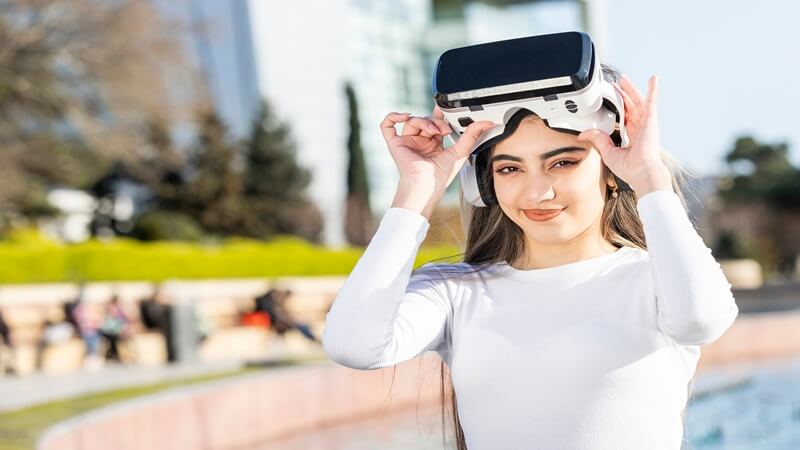Table of Contents
- Introduction to Virtual Tours
- The Way That Virtual Tours Are Transforming the Real Estate Industry
- The Technology Behind Virtual Tours
- Benefits of Virtual Tours for Different Industries
- Tips for Creating Engaging Virtual Tours
- Case Studies & Success Stories
- Future of Virtual Tours
- Final Thoughts
Virtual tours transform real estate by providing immersive, 360-degree online property viewings. This technology saves time for buyers and agents, enhances the home-buying experience, and expands market reach. Beyond real estate, impacts various industries, including tourism and education, by offering accessible and efficient ways to explore spaces remotely, highlighting their growing importance and versatility.
Introduction to Virtual Tours
Virtual tours are revolutionizing how people experience spaces without being physically present. This technology enables users to explore properties, museums, and even outdoor landscapes from their homes. As 360 virtual tour software becomes more advanced and accessible, the demand for remote experiences is rapidly growing. Businesses and individuals can effortlessly showcase their spaces to a global audience, breaking down geographical barriers and enhancing user engagement in unprecedented ways.
The rise has made it easier for individuals and businesses to showcase their spaces in an interactive and immersive manner. From real estate agents to educators, various sectors leverage to enhance user engagement and facilitate decision-making processes. Whether offering a sneak peek into a new property, exhibiting museum artifacts, or presenting local tourist attractions, give users a rich, detailed, and interactive way to explore different environments.
The Way That Virtual Tours Are Transforming the Real Estate Industry
Virtual tours are a welcomed and effective tool for property showing in the real estate market. Since properties can be digitally toured, prospective buyers may save time and make better judgments. The National Association of Realtors states that boosts attention and engagement in listings by thirty percent. This transition offers convenience for potential buyers and expands the marketing reach for real estate professionals.
Real estate agents find it especially useful in today’s digital age. Potential buyers can now explore multiple listings without the need for in-person visits. This speeds up the buying process and allows for a broader reach, attracting out-of-town buyers who might have yet to consider the property. Additionally, when physical viewings may not be possible or advisable, are a perfect alternative to ensure that business continues uninterrupted.
The Technology Behind Virtual Tours
Virtual tours leverage cutting-edge technologies, including 360-degree cameras, 3D mapping, and augmented reality. These tools work together to create an immersive, interactive experience, allowing users to navigate through spaces as if they were physically there. High-resolution imagery and sophisticated software ensure the virtual experience is as close to reality as possible, providing detailed, crystal-clear views of every nook and cranny.
Companies like Matterport and Google Street View have been at the forefront of developing these advanced solutions. With continuous innovation, the quality and accessibility are improving, making this technology more viable for various applications. These advancements ensure that users have a seamless experience, with smooth navigation and plenty of interactive features to make the virtual tour informative and enjoyable.
Benefits of Virtual Tours for Different Industries
- Real Estate: Enhances property listings and attracts more potential buyers.
- Hospitality: Allows guests to explore hotels and resorts virtually before booking. This unprecedented level of access helps build confidence among potential guests, leading to higher booking rates.
- Education: Facilitates virtual campus tours for prospective students. Schools and universities can provide students with a worldwide feel of their campus environment, helping them make more informed decisions.
- Tourism: Promotes destinations by offering virtual previews of attractions. Tourists can virtually visit and plan their trips better, ensuring they get all the key sites.
- Retail: Provides virtual store tours, enhancing the shopping experience. Customers can explore stores, check out products, and even benefit from interactive elements like clickable hotspots for more information.
Tips for Creating Engaging Virtual Tours
Creating engagement requires careful planning and execution. Here are some tips to ensure your virtual tour stands out:
- High-Quality Imagery: Use high-resolution images to create a seamless viewing experience. Clear, sharp visuals help in making the virtual tour realistic and enjoyable for the viewers.
- Interactive Elements: Incorporate clickable hotspots to provide additional information and context. These elements transform passive watching into active engagement, where viewers can interact with the virtual environment.
- User-Friendly Navigation: Ensure the tour is easy to navigate with a clear and intuitive interface. The simpler it is to move through the tour, the more likely users will stay engaged and explore further.
- Storytelling: Craft a compelling narrative to guide the viewer through the virtual tour. A well-told story can captivate the audience and make the experience memorable.
Future of Virtual Tours
The future of virtual tours looks promising, with continuous advancements in virtual reality (VR) and augmented reality (AR) technologies. As these technologies evolve, will become more immersive and accessible. Enhanced features like interactive maps, virtual staging, and real-time customization will soon become commonplace, taking user engagement to new heights.
Virtual tours can expect to play an increasingly vital role in various sectors, providing new ways to explore and experience the world. Industries will continue to find innovative uses for this technology, making it a staple in marketing and user experience strategies. Integrating AI and machine learning will further enhance the capabilities of offering personalized experiences for each user.
Final Thoughts
Virtual tours are transforming how we interact with spaces and information. The benefits are vast and far-reaching, from real estate and hospitality to education and tourism. The continued development and adoption of virtual tour technology will undoubtedly shape the future of these industries, offering unparalleled convenience and engagement for users around the globe. As technology advances, the potential applications for will expand, making them an essential tool in many fields.
For more info visit Business Stylish
